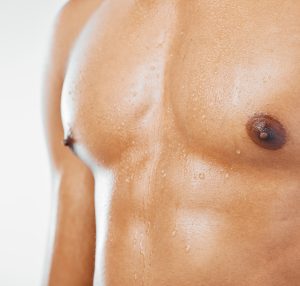Introduction
While breast augmentation is mostly common for women, the surgeon in male plastic surgery has spotlighted men seeking breast implants. The reasons vary from gender re-assignment surgeries, pursuits for theatrical careers, to simply wanting a more feminine appearance or more defined muscular look. These enhancements often assist men such as those, who can not achieve definition even with exercising, transsexuals and cross-dressing males to better fit into women’s clothing and integrate into their identified gender seamlessly.

How does a man get breast implants?
The male breast enhancement procedure mirrors that executed for women. It involves making an incision in the breast, inserting a saline or silicone implant of suitable size, and then closing the incision to initiate healing. This surgery can be approached in several ways, including Transaxillary (through the armpit), Periareolar (at the nipple’s outer edge), and Inframammary (under the breast, to conceal scars).
What is the recovery time after breast implants?
Post-surgery, fatigue and soreness are expected, necessitating ample rest for optimal healing. Surgeons typically recommend wearing compression garments and may advise breast massage to promote recovery. Initial numbness in the breast and nipple area is normal, and any persisting redness or increasing pain should prompt immediate consultation with the doctor. After breast implants it is recommended to sleep on the back at least for the first 3-4 weeks. It is necessary to take care and avoid to stretch the arms wide and to avoid carrying more than 1kg of weight.
The recovery after breast implants is smooth and is not painful. The patient may feel sensitivity, which is comparable with the same pressure as after chest muscle exercises.
Postoperative recovery for muscle implants typically spans one until 4 weeks, during which activities should be limited, and ample rest is needed. Most discomfort and pain subside within the initial days, managed by oral pain medications, and normal routines, including exercise, are generally resumed by the 3rd or 4th week. The aim is to enhance aesthetic appearance and improve body proportions, consequently boosting self-esteem and psychological wellbeing.
What are muscle implants for men?
Beyond breast implants, muscle implants play a crucial role in enhancing the shape of the chest, arms, or legs for men with underdeveloped muscles. Whether to augment the pectoral muscles or reshape extremities, these implants serve aesthetic and psychological purposes and are not a substitute for regular exercise and body building. They cater to patients unable to increase muscle size despite rigorous exercise regimes, enabling them to enhance their physique aesthetically.

What is the best alternative for male chest implants?
For those not requiring firmness in the muscle, autologous tissues, like body fat and skin, serve as viable alternatives to muscle implants, shaping and sculpting parts of the extremity. These procedures, such as smart high definition liposuction or even in combination with a gynecomastia, are crucial when men aim to maintain definition in specific areas and are inclined to enhance aesthetic appearance and proportionality in the body, especially the chest.

Conclusion
Men seeking breast implants, muscle enhancements or high definition in the chest area, represent a shifting paradigm in plastic surgery, as it’s no longer a domain exclusive to women. Whether driven by desires for a feminine appearance, career pursuits in theater or movies, gender re-assignment processes or a higher defined chest shape, these procedures are providing avenues for self-expression and identity realization, contributing to enhanced self-esteem and psychological well-being. However, a thorough understanding of the procedures, risks, and postoperative care is essential for anyone considering these transformative surgeries.
Disclaimer: The content on this blog is intended for general informational purposes only. It is not a substitute for professional medical advice, diagnosis, or treatment. Always consult qualified healthcare providers for personalized advice. Information regarding plastic surgery, dental treatment, hair transplant, and other medical procedures is educational and not a guarantee of results. We do not assume liability for actions taken based on blog content. Medical knowledge evolves; verify information and consult professionals. External links do not imply endorsement. By using this blog, you agree to these terms.





